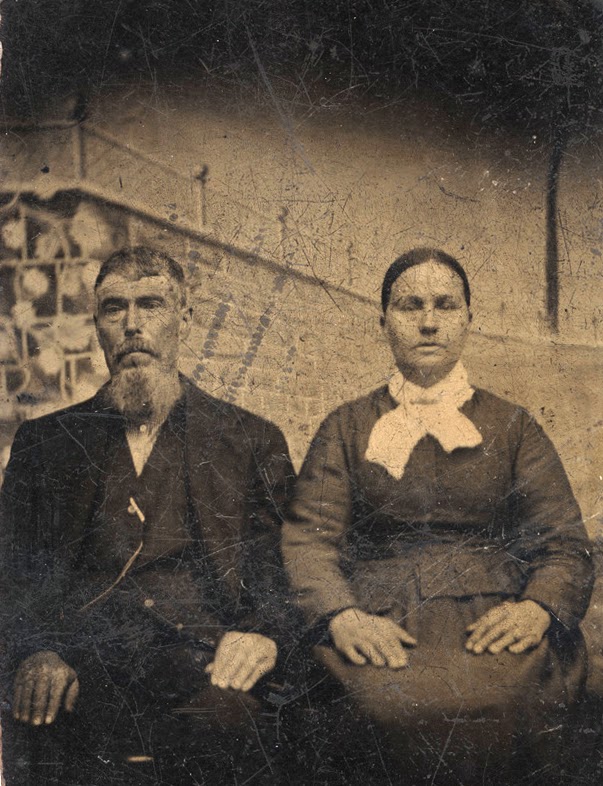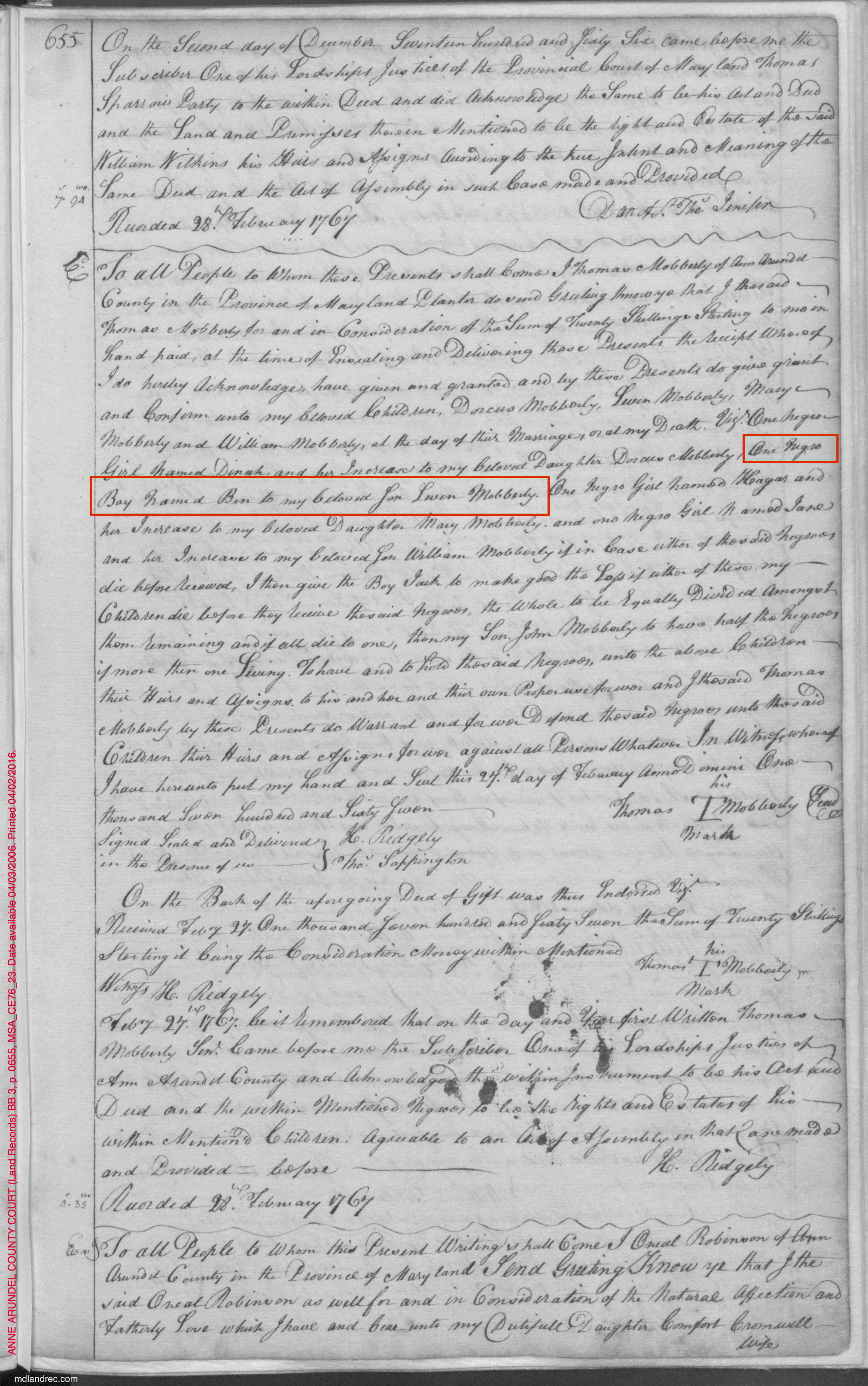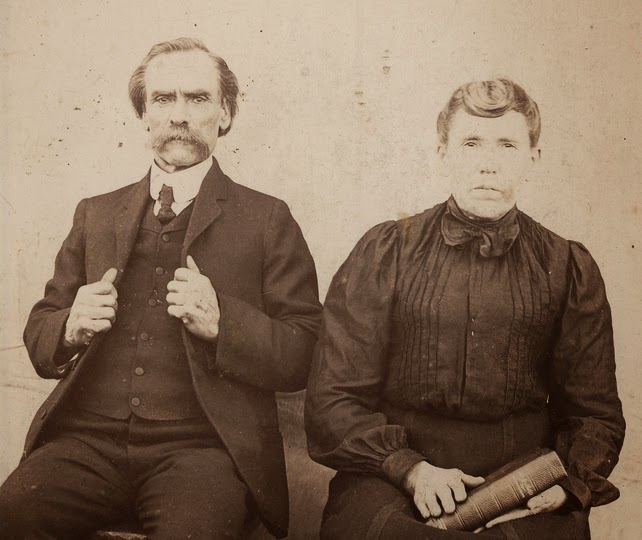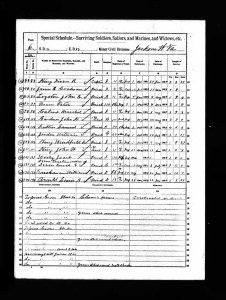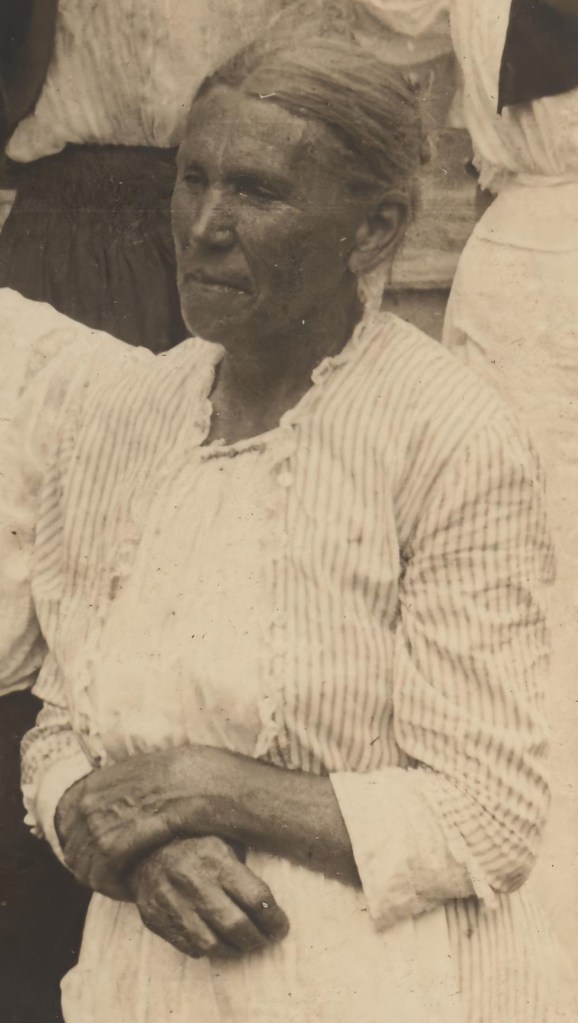
[Author’s note: I know it doesn’t seem like it should have, but this post took me over 2 years to write. It was one of those writer’s block episodes. Maybe because there is so little to write about, I didn’t know how to put it down on paper and make it seem…meaningful. Well, here it is, although I still don’t think I did her justice! Maybe I will find more about her life in the future – fingers crossed.]
The family papers from our Shepard side of the family have lots and lots of photos of Jane, her husband, and her children, but we know very little about her life other than what we see in these pictures. Hm, and I don’t recall my grandfather talking much about her either. Which means this bio is not full of much data, but, I have tried to piece together a bit of a life for her. So, here goes.
We know nothing about the how, or why, of our Buchanan line’s arrival in America.
It was possibly sometime in the 1700s, (the date is not currently known, nor has it been proven). The current theory is that John Buchanan is the first in the U.S. of the name in our line. So, until we know differently, he is the dude we start with.
John Buchanan and his wife Jean/Jane Rowan[?] are found in York County, Pennsylvania, where the family stayed for a good 25 years before their grown children started moving out and about the country. Their son William, Jane’s great grandfather, was living in Virginia by the 1780s. I know this because land records were found for him in the area at that time.
When Jane was born, on October 10, 1852, her parents, William Atkinson Buchanan and Margaret Mobley, had settled in Wood County, Virginia (later to become West Virginia). The map below shows the approximate location of the family farm in Wood County, which was deduced using land records for William and Margaret. I think the farm was more towards the right part of the encircled area on the image. Pond Creek Road can be seen towards the bottom of the image; (I think this is the road my mother and I were trying to find the cemetery for Hartley and Susannah Shepard on when we visited years ago.)
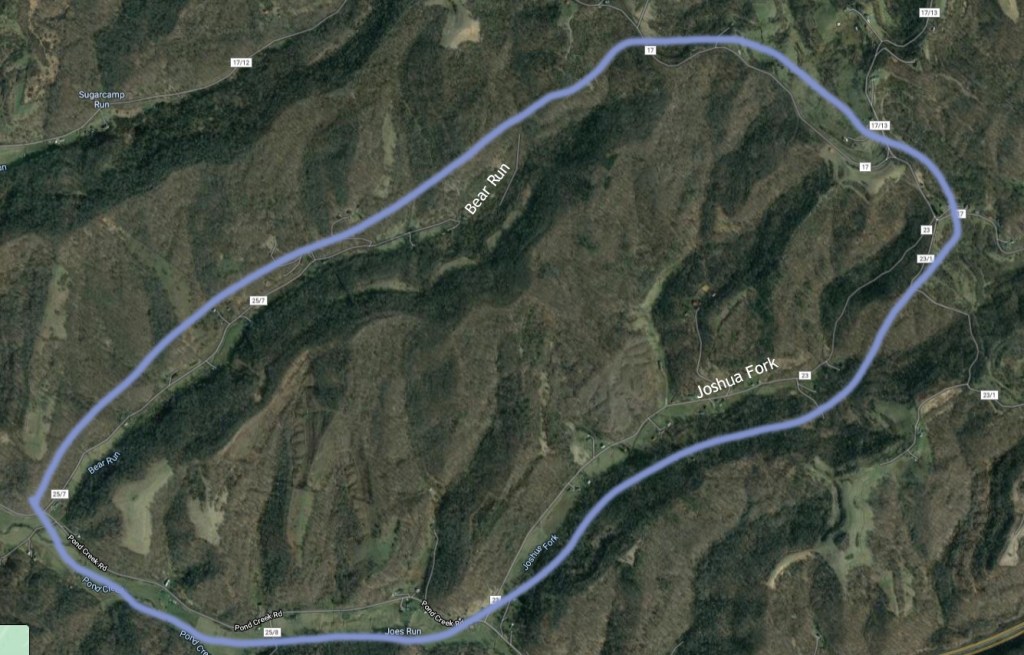
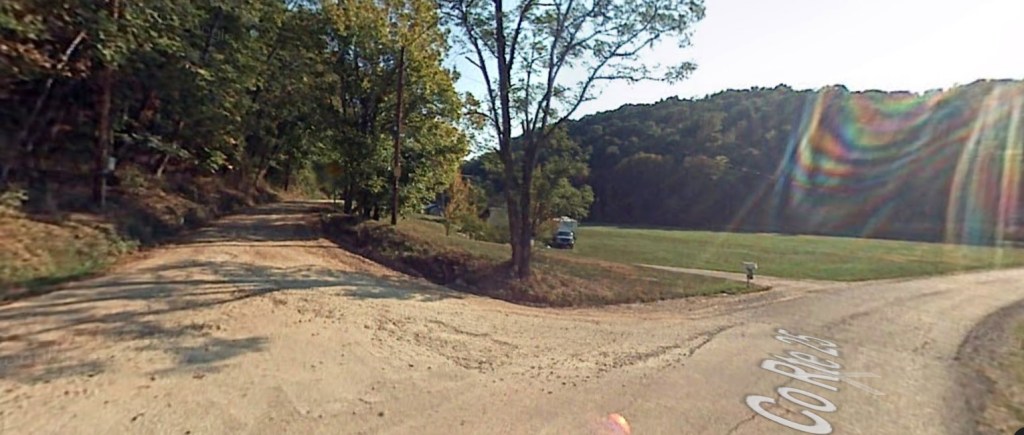
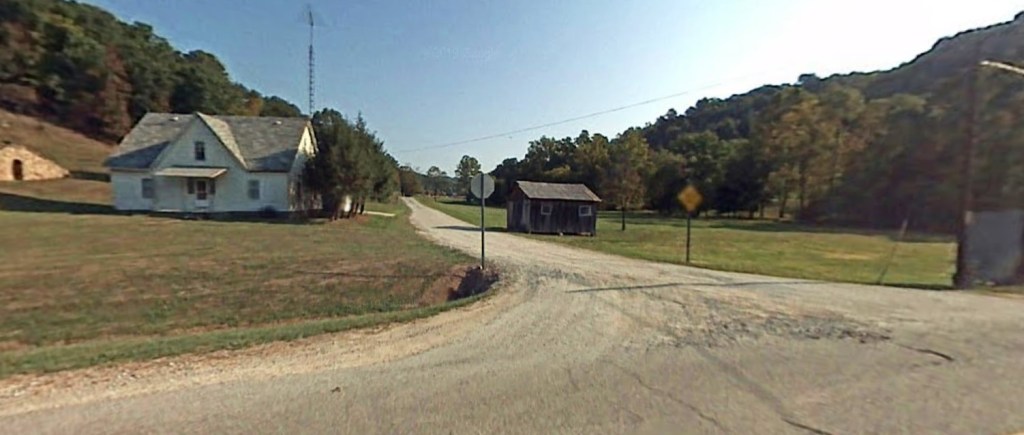
Jane attended school from about 1857 to about 1866. Which gave her enough time to learn the basics of reading and writing. (I found some great images of old schools in the County). It is possible that one of these two schools is where the Buchanan children attended, (I lean more towards Mount Hope as it just seemed closer to their farm).

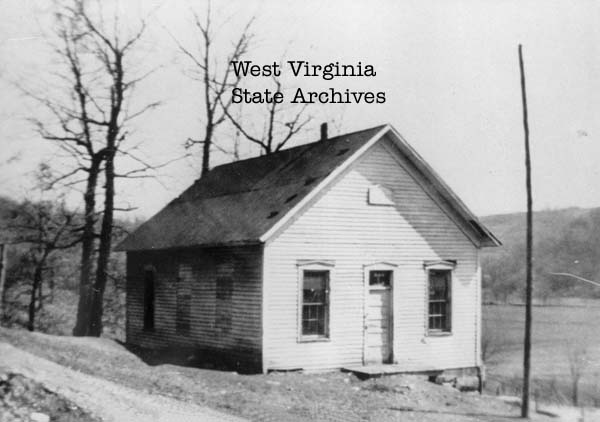

Jane must have been in a hurry to get out of the house, (or maybe it was what all the cool girls were doing), because she was married at the age of 15. The groom was Elza Shepard, the eldest child of Hartley Shepard and Susanna Smith, and he was 21.

At the time of the marriage Elza’s family was living in Jackson County. So, I believe that because Elza was 21, he was out on his own making a living as a farm hand, or working at oil rigs in the Wood County area, and that is how he met Jane. Of course, I have no proof of that, but it seems plausible.
After Jane and Elza were married they made their first home together on a farm that they didn’t own, at least not in 1870, (there was no ‘value of real estate’ entered for them in the 1870 census, just ‘value of personal property’). By 1872 they had purchased 110 acres, (4 acres of this property description were owned by W. A. Buchanan, Jane’s father), and Elza appears in the 1873 Table of Tracts of Land, which included valuation and acreage (which was listed as 106). However, they didn’t live on this property for long, their son Thomas was born in Wood County in about 1874, and they stopped paying property taxes in Wood County after 1874. Their son Isaiah was born in Jackson County in 1877. This indicates that by at least 1875 they were living in Jackson County.
Elza and Jane purchased property from her parents when they moved to Jackson County. And they lived on that property for about 10 years before they made another move, this time to property in Wirt County that Jane’s father had sold to her for $1.00 in August of 1888. Maybe her parents realized they were having a hard time of it and wanted to help them out by selling them property at this nice discount. or they possibly made side deals regarding crops and the like.
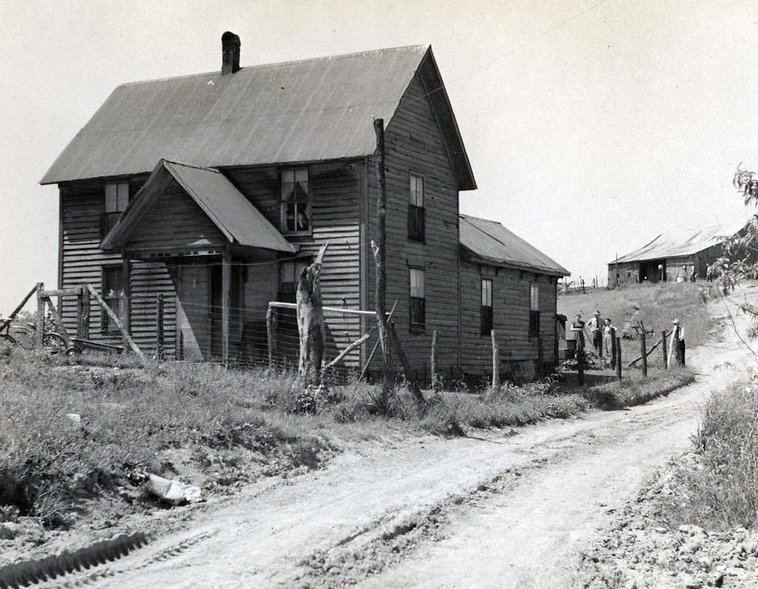


It is believed that the above pictures are of Jane and Elza’s home. If it is, then it would likely be in Wirt County, as that is where they settled permanently after the move from Jackson County (and the photograph seem like they was taken in the early 1900s). But, again, I don’t know for sure. I need cousins to verify!
You can see the oil rig in the background of one of the pictures. Oil was a big industry in this area at the time. And, our relatives took full advantage of the money making opportunities when they could by leasing their property to these oil companies. In fact my mother inherited a share in one of the leases, it wasn’t worth much by the time she inherited, and it has since been sold.
Jane and Elza had 14 children together (which included a set of twins), but only 11 of those children lived to adulthood.[1]

That’s really all I can say about Jane at this time. She looks like she lived a hard life, but she also looks like she enjoyed her grandchildren. Her family was large and poor, but Jane was a respected and loved wife and mother. She died 12 Mar 1925 in Wood County, West Virginia.
…as you go south from Parkersburg on “old” Route 2, you go up what is called “Limestone Hill”. There is a church to the left, as you reach the top of the hill. To the right is a junction with a dirt road, called Gate’s Ridge Road. It is one lane and, if the weather is dry, is passable. Winding about three miles on this road, you come to a church on the left. The church-yard also serves as a cemetery. Here lie the remains of Elza, Jane and several of their children, as well as many friends and relatives. Where the church sets is the junction of another road coming from the left. Down this road about a mile or so (setting on a rise of the hill) is the old farm. It appears that the old barn may still be there; but obviously the house with its electric wiring and modern siding must be a replacement. Grandmother died in about 1925, I guess. I recall being taken on a long journey during the winter from Verasailles Avenue to Parkersburg, and being presented to Grandmother lying on a bed; she knew me but I not her. (She had cared for me as an infant at the farm). Brother Bud told the story of being chased, as a small boy, by a large Tom turkey in the yard of the farmhouse, it appearing that the bird was about to catch him; but as he ran screaming from the bird (which stood higher than he) it passed the front porch step, where stood grandmother, who had run from the kitchen to see what the commotion was all about. She made a fast grab for the turkey, and seized it by the neck and started to shake it. After a vigorous shaking the turkey suddenly went limp, and Bud, in complete amazement watched her wheel about and carry the bird into the house. They had turkey for dinner that evening!! When grandmother cared for me as an infant at the farm, it was the winter of 1917-18 when a terrible flu epidemic swept the nation. There were deaths in the family at that time at the farm, so I understand. Some time after her death, grandad moved into Parkersburg to stay with Uncle Hod, where I visited with him overnight in the 1930’s. He had a large picture of her by his bed, and he would look at it and say “she was a good woman.”
Notes from a letter to Sally from Zara and Brooks, [currently unknown Shepard relatives].
We are lucky in that we have many images of Jane, although they are when she is older. You can get a good sense of her in the pictures. (Click on first image then you can click through each at its proper size.)
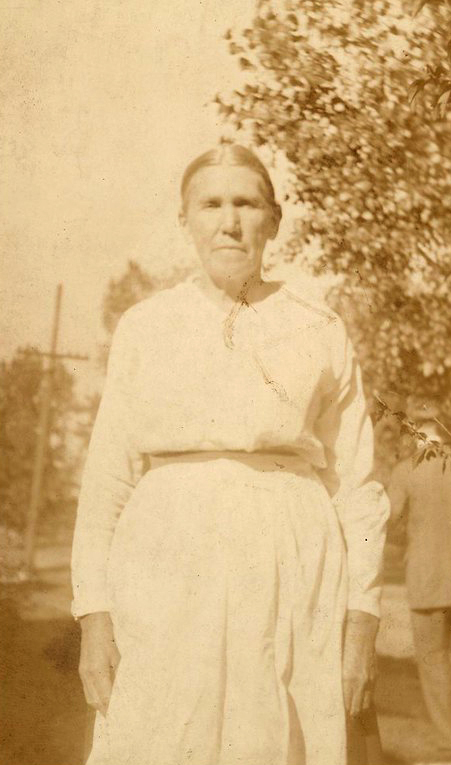
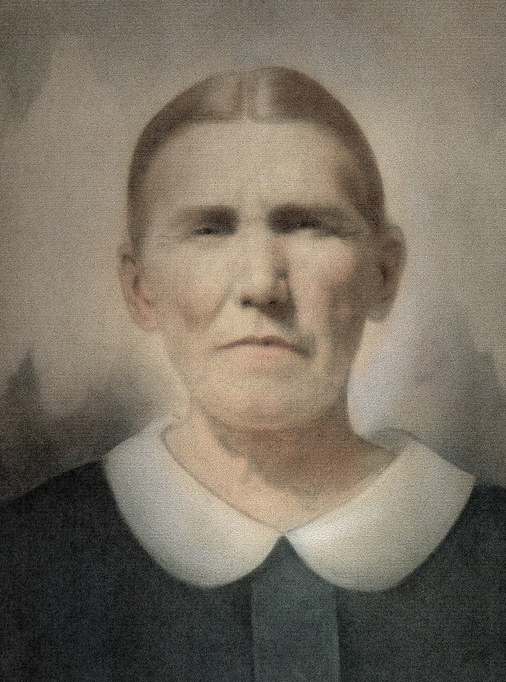

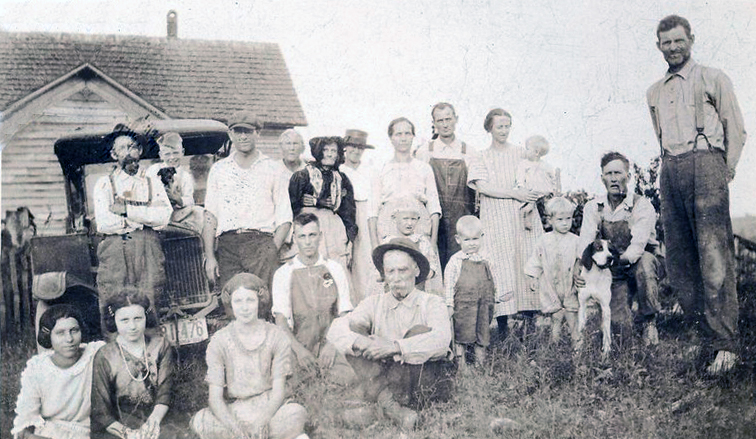
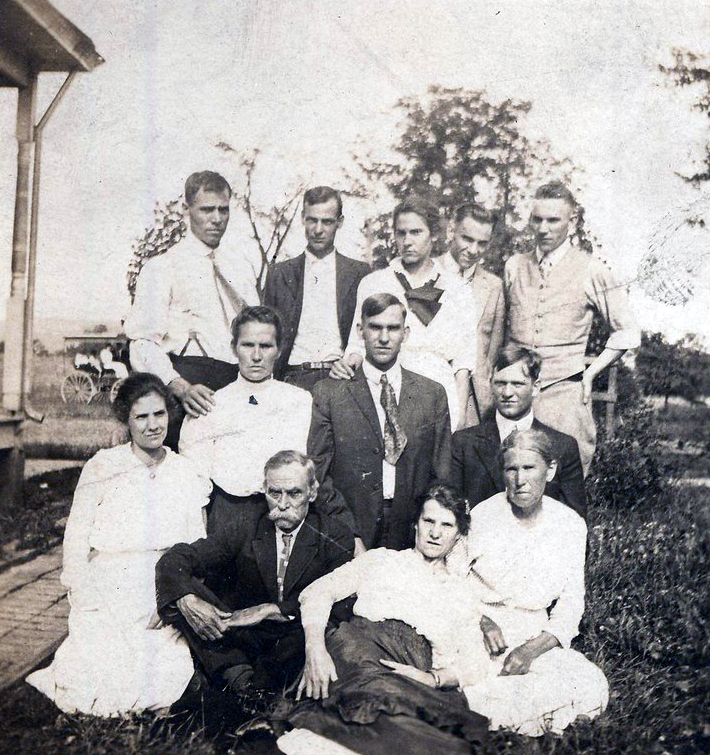
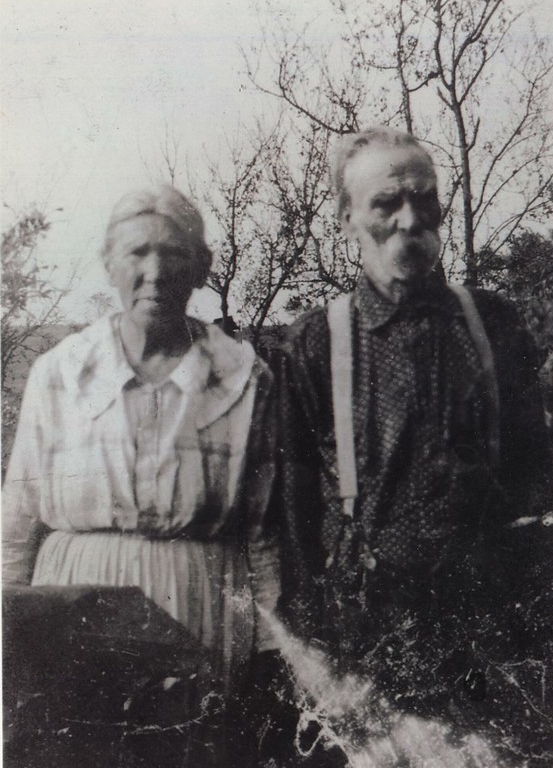
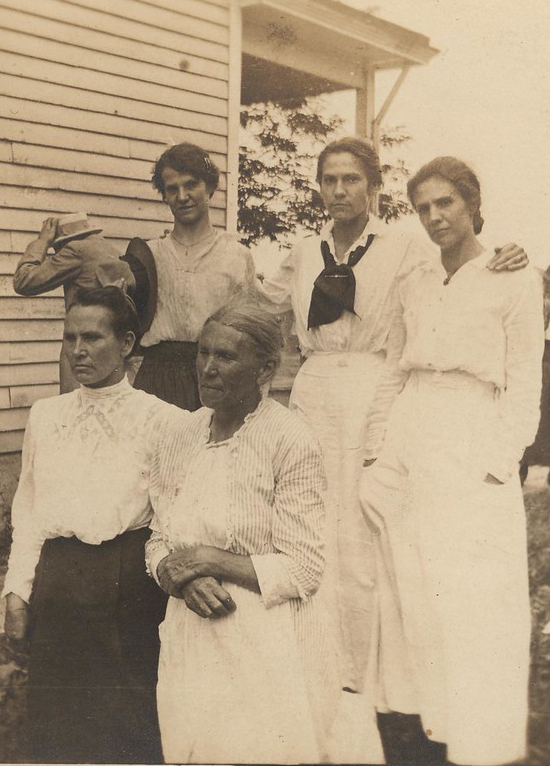

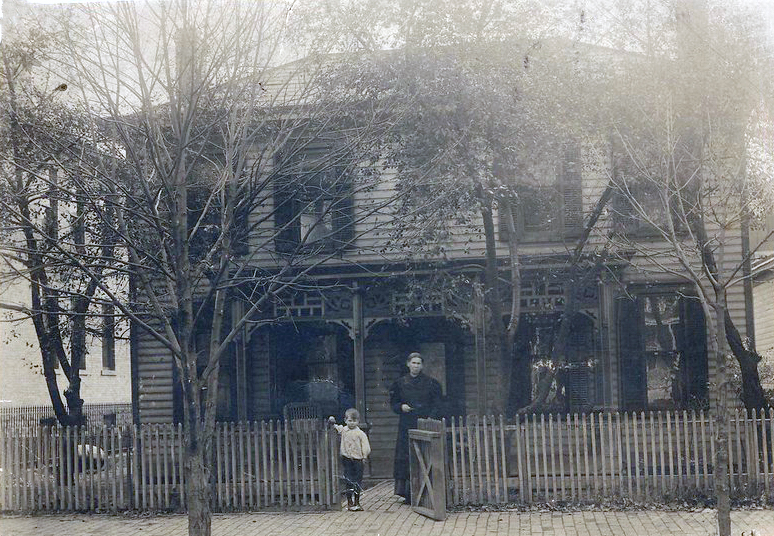




Sources:
- 1910 Federal Census, Tucker, Wirt County, West Virginia; Roll: T624_1699; Page: 6A; Enumeration District: 0114; FHL microfilm: 1375712. [Ancestry.com image 11 of 24, lines 11-17, dwelling 94, family 97.]
- Jane Shepard entry, Wood County Deaths, Death Record no. 3: 209, County Clerks Office, Parkersburg, West Virginia.

